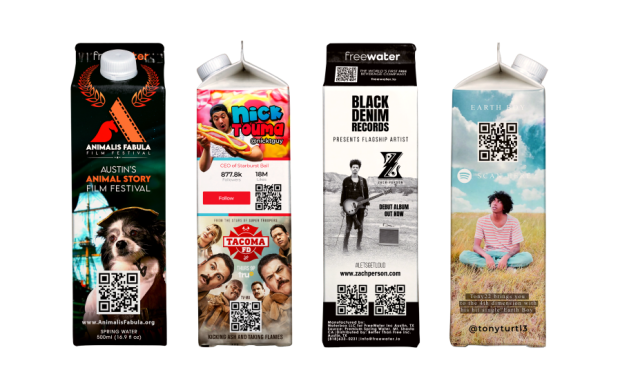How FreeWater Gives Away Its Product and Still Makes Money

Water should be free — so why do we pay to drink it? That’s the question that’s being asked by Austin-based startup FreeWater as it pushes to make not only water but other products free across the globe.
To generate revenue, FreeWater uses a strategy that involves printing advertisements on aluminum bottles and paper cartons filled with natural spring water, according to its website. Interested advertisers can leverage FreeWater’s physical packaging by integrating QR codes that allow consumers to scan and access various benefits, including collecting coupons, watching videos and breaking news, ordering food, participating in surveys, registering to vote, downloading music, movies, TV shows, video games and software, and experiencing augmented reality (AR) features, among other possibilities.
This approach allows the company to distribute the water for free and set its example of what it calls the “giving economy” by not only offering free water but also allocating 10 cents per beverage toward the construction of water wells in underprivileged communities.
“Our product makes donating to charity as simple as saving money on your groceries and drinking FreeWater,” said FreeWater founder Josh Cliffords in an October press release.
According to the release, every new free product introduced is associated with a specific charitable cause and receives corresponding donations.
The move to launch such an offering follows a 2021 finding that 800 million people lacked access to safe drinking water, while nearly half of the global population, approximately 3.6 billion individuals or 47%, resided in regions experiencing water scarcity for at least one month per year.
In a similar vein to its unconventional revenue generation approach, FreeWater adopts a unique strategy for its social media presence. Its tactics have proven to be successful, as the startup has gained significant traction since its inception, capturing the interest of brands, investors and consumers worldwide, according to the October press release.
FreeWater pointed in the release to its TikTok and Instagram accounts, which are driving its influence. In 2022, the company amassed 1 million organic impressions.
One of the company’s top TikTok videos has garnered over 34.2 million views and features a man who seems annoyed about receiving free water. Although the video could have been staged, the man in it fires off several questions about the integrity of the FreeWater mission.
In the video, the man asks where FreeWater gets its water from and follows up with, “It’s, like, Flint, Michigan, water or is it from an actual spring?” The man recording confirms it’s from a spring in Georgia.
In a separate TikTok video that has more than 10 million views, another man bombards the video recorder with questions, including the cost of advertising. The man recording the video says the cost amounts to approximately $1 per water bottle.
In 2022, FreeWater funded two water projects in Kenya through the distribution of free spring water in the United States, per the October press release.
“Our startup puts a spin on capitalism by freely distributing negatively priced goods that are profitable,” said Cliffords in the release. “We help brands reach their desired audience, provide consumers with high-quality goods for free, and donate to charity to solve global issues without using a penny of taxpayers’ money.”
Free vending machines are next for the company and will help its distribution model, according to the release.
“Our mobile app will limit users to one to three free drinks/snacks per person daily,” Cliffords said in the release. “Free vending machines will be emptied daily, and each location will donate between $10,000 to $36,000 to charity annually.”

